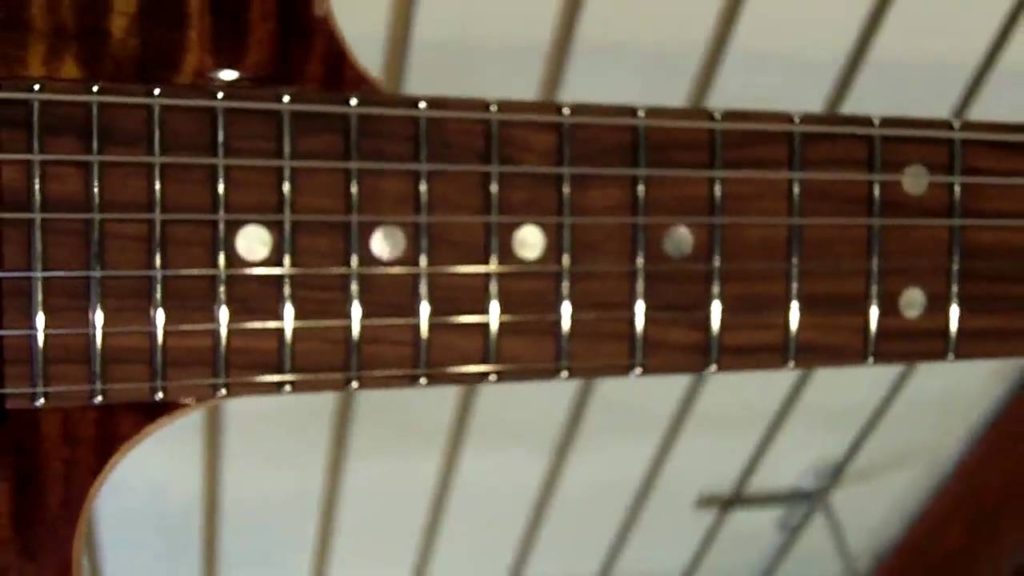When you first learn a musical scale in your beginner guitar lessons, you play one note at a time ascending and then descending. This quickly gets boring and repetitive, so it is important to find other ways that stimulate the mind and the muscles.
Whether you are trying to apply guitar scales to a solo or melody, it helps to take different approaches. Here are some pointers and creative tips on guitar scale practice that may alleviate the boredom.
Find a Song With the Scale
One of the best ways to practice a scale is to find a song or guitar solo you know that uses it. We obviously can’t include every song and its scale here but there are some tricks to finding the info. Use search engines and social media to search the song and its details, you will be surprised how many Reddit threads are out there on detailed music theory in popular songs.
Or you can search the sheet music if you are feeling musically adventurous and use the Circle of Fifths to read the key and notes. If you are less musically inclined tab and chord websites also are filled with songs. Use a tuner when playing notes to reverse engineer what you are playing. This is not just good scale practice; this is excellent ear training.
You can also turn on your favorite song and use your ears to find the notes, this is how it was done before mass publication and the Internet. First you need to find the right notes and then figure out what scale you are using. You can use a scale finder to help you with this. It can be challenging, but it is how many of the best guitarists have learned.
Use Chord Progressions
The guitar is a chordophone instrument, which means chords and their progressions are essential knowledge. Start with basic chord progressions like the I-IV-V and play an arpeggio of each chord. Using the key of C and a I-IV-V C-F-G, playing the notes of each chord will get us the entire C major scale. Start to make your arpeggios more complex and add in notes from the other chords.
As you advance to more complicated chord progressions, don’t forget to keep the ideas of boring guitar scale practice close by. Be sure to practice these chord progressions on different locations up the fretboard and mix in other common guitar techniques so you are learning more than just your scales. If you need help with these chord variations, use a guitar chord chart.
Search engines are the best place to find chord progression and scale ideas as you grow in your guitar playing. Simply look up what chords belong to the scale you want to know, and you will find the progression built of your notes. Start small with minor additions until you are comfortable with longer solos that still follow the chord progression.
Write a Solo or Melody Using a Scale
Pick a random scale and use it to build a melody or lead solo line. This may be better for folks who are not that great at playing chords yet. Begin the melody on the root note, unless you want to be bold and use a pickup note as you lead in. Follow the scale as you create an original short riff, bass line, or longer tune.
And just as the other tips have dual purposes you will learn more than just scales with this exercise. Every scale has specific intervals and they each have a particular quality in music like perfect, major, minor, or a tritone. As you build melodies you will start to notice these intervals and soon you will be able to use them when looking for a particular feeling to convey.
Change the Key of the Scale
Whether you have a certain scale in mind or you have randomly chosen one, change it to a new key. Be sure to do it without looking it up! Start with the root note of the new key you are in and use the same semitone pattern of the first scale. This can be found by counting the distance of each interval of your scale. When you are done play both patterns and be sure they have the same sound.
If it sounds different or the vibe is off, your ears will tell you. No matter what key, the intervals all have the same qualities. This is a good exercise to do with every new scale you learn, try and change it into at least one other key without anything but ear reference.
Find Backing Tracks to Play Scales With
There are a huge variety of apps, software, and video for backing tracks and guitar practice. In many cases, you can search for music that fits a scale you are looking for, or at least potential ideas. Turn this music on and just begin to play along using only the scale. Once again try different patterns, arpeggios, fretboard positions, and really mix it up.
Expand and experiment to see what other scales or modes you may be able to play over a backing track. Play like a jazz musician and try some dissonant tones over well-worn chord progressions like the ii-V-I. Or if you play heavy metal your backing tracks will be power chords for you to play exotic and tritone-centered scales and solos over.
Be Dissonant and Break Out of the Scale
Which leads us to the next guitar scale practice tip, don’t just play the scale! Obviously a guitar student needs to learn basic major and minor scales and initially practice them in a repetitive manner. Muscle memory is not possible without repeating boring and strenuous activities, stick to the basics as a warmup exercise for more creative endeavors. Eventually, though you must learn to add new notes in!
When you are writing a melody or playing a solo over a backing track, try playing notes that you know do not belong in the original scale. When playing rock and blues this is easier as there is a lot of chromatic movement between notes. Sometimes playing the wrong note will sound terrible, other times it is incredible. Your ears are always the best indicator and the more you train them the better of a guitarist you will be.
If you are aware of your scale and key, any method of guitar practice is effective and will help you learn solos and riffs. Whether you want to create your own songs using scales and chord progressions, or jam along with backing tracks, they are both great ways to enhance the boring aspect of guitar scale practice. The most important factor is to study the notes and intervals as you play, because a closer look into music theory never hurts any musician!
By Shawn Leonhardt for Guitar Tricks and 30 Day Singer



